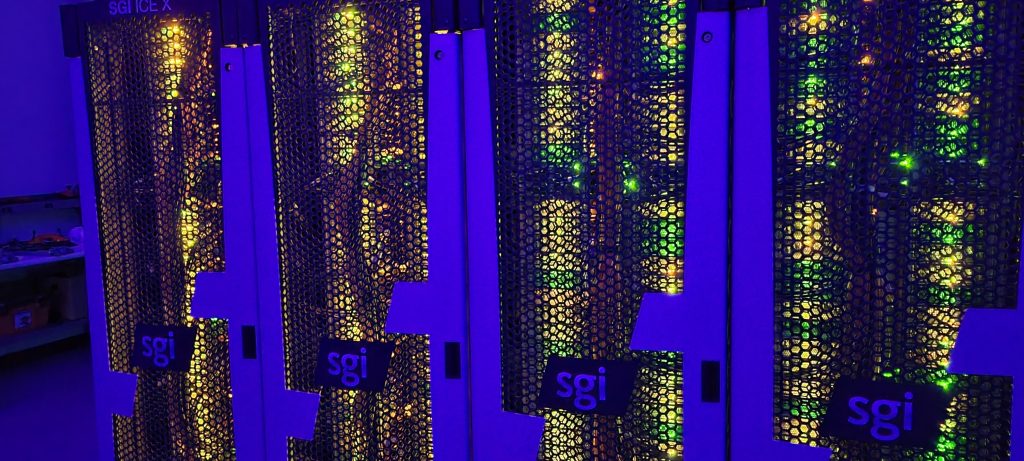Infrastructure
High Performance Computing
Throughout the lifetime of IIDS we have created a state of the art computational facility that provides the resources essential to contemporary research on evolutionary and computational biology, machine learning, and any many other topics. With a state of the art data center, computing clusters and data storage systems, we excel at supporting varied scientific research at all stages from project development to data reporting.
The RCDS data center is a 1400 square foot facility in room 120B in McClure Hall on the University of Idaho campus that was specifically designed and renovated for the Core. Optical fiber and copper interconnections provide 1-100 Gb/s data transfer rates within the Core, which is connected to the 10Gb/s university backbone and from there to Internet 2. This room has a dedicated UPS with three-phase power and four forced-air handlers attached to redundant university chilled water systems.
Falcon

Falcon currently consists of approximately 932 nodes with dual Intel Xeon E5-2695v4 18-core processors running at 2.1 GHz (36 cores per node) for a total of 33,552 cores capable of more than 1 PetaFLOPS of compute capacity. Each node on Falcon is configured with 128 GB of RAM for a total of about 120TB of overall system memory, uses an Infiniband-based interconnect configured as a 7-dimensional hypercube, and uses a 1.3 petabyte fault-tolerant Lustre filesystem.
Computing
The main cluster provides over 1500 processor cores and over 8 terabytes of system memory, with Infiniband network connections. The modular design of this cluster, primarily enclosures (blade chassis) and blade servers, makes it possible to service or upgrade components without interrupting our users. Removable and redundant fans and power supplies located at the back of the enclosure provide easy access and replacement without powering down individual systems, and each enclosure contains its own network components (1GigE) to maximize inter-enclosure server communication. We use a higher bandwidth network (10GigE/ CX4 uplinks) for communication with servers outside the chassis. Components include Dell M1000e blade enclosures and M605 blade servers, and Dell R815 and R730 servers as ‘fat’ nodes. The cluster includes two Dell R730 servers, each with four Nvidia K80 coprocessors for use by CMCI associated researchers. We added 32 SuperMicro compute nodes, each with 128GB RAM and 8 physical cores (16 logical) in 2016, and several GPU nodes during 2017-2019.
Standalone Servers
We also maintain several servers that are not connected to the cluster systems. These are for jobs that require very large shared memory machines such as distance-based phylogenetic analyses and molecular simulations, for software development, and for investigators who are unfamiliar with or do not require a cluster environment. The most powerful servers in this group contains over 100 times the system memory of a standard desktop (1000 GB) and is used heavily for hybrid sequence assembly of Illumina and PacBio sequence data.
Data Storage
Applications
Listed below are a few of the applications installed on our servers for use.
